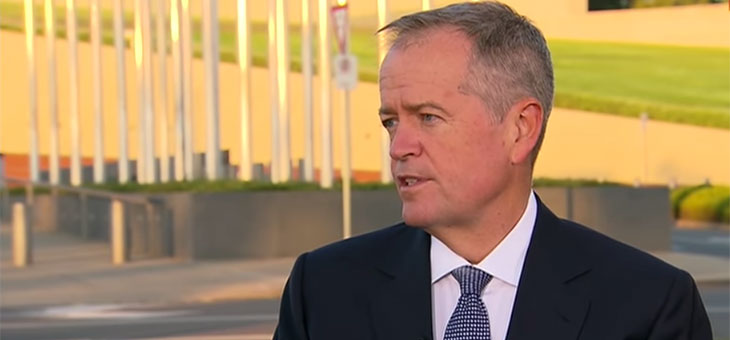With a federal election set to be called within days, Opposition Leader Bill Shorten is expected to put tax cuts and health at the top of his budget reply speech tonight.
As the Government belatedly added Newstart recipients to the list of Australians eligible to receive its one-off energy rebate – $75 for singles and $125 for couples – it is anticipated that Mr Shorten will promise 2.9 million workers who earn less than $40,000 a bigger tax cut from 1 July. For older Australians, that’s good news only perhaps for the 30 per cent who work full or part-time.
Fairfax Media reports that an independent analysis of the Government’s budget by the National Centre for Social and Economic Modelling (NATSEM) showed that the biggest beneficiaries were middle and high-income couples with children.
The Conversation reports that the budget will “widen the gap between rich and poor” and that its effect on the poverty rate – the proportion of households living on less than 50 per cent of median income – is to reduce it by 0.2 percentage points by 2024-25.
An analysis led by Professor Robert Tanton at Canberra University’s Institute for Governance and Policy Analysis says: “This is a fairly small reduction. But due to the tax cuts in 2024-25 raising the net incomes for high-income households, this means income inequality will be higher.
“The 0.2 percentage point decrease compares to an 0.8 percentage point reduction that NATSEM’s modelling estimates would result from raising the Newstart allowance by $75 a week from what it is now.
“The message from this analysis is that the changes to the tax and welfare system in this budget benefits those with higher incomes and who are paying tax, with little to no gains in future years to some of those low income earners who aren’t paying tax.”
The Opposition’s promise of more funding for public hospitals and for Medicare shapes as being of greater interest to older Australians than tax cuts. We will outline the key points as they relate to older Australians our eNewsletter tomorrow.
Meanwhile, Consumers Health Forum chief executive Leanne Wells has welcomed the Government’s $448 million primary care scheme for patients over 70. Under the scheme, if the Government is re-elected, general practices will receive additional payment for doctors and other clinicians to provide consultations, referrals, test results and scripts without having face-to-face consultations with patients.
“This is a welcome development in bringing Medicare into the 21st century by providing services and advice by doctors to patients without a face-to-face consultation as currently required under Medicare rules,” she said.
“For many older people with chronic illness, getting to the doctor for routine checks and the like is a major challenge. More than half of Australians over 70 years have two or more chronic conditions.”
Ms Wells said the scheme would also help older Australians to age in place, adding that the arrangements would be voluntary for both patients and doctors. She was critical, however, of “the absence of a national strategic plan to combat one of Australia’s biggest health problems, obesity”.
Some YourLifeChoices members were critical of the absence of any measure to make dental care more affordable.
“How about those rip-off criminals that call themselves dentists? Any changes in the wind to their Chicago-style racket? I’m considering dental treatment in Thailand in the future,” wrote YourLifeChoices member Oz in Or.
Ted Wards was more concerned about the volume of medications some older Australians were being prescribed. He said: “There are way too many people seeing doctors when they don’t need to and on medications they really don’t need! I work in aged care and some of our clients are on 20 different medications and don’t get reviewed until a crisis. Most often their medications are drastically reduced and their health improves. Why are we not looking at this issue?”
Will you analyse and compare the major parties’ platforms to see which would benefit you more?
Related articles:
Budget overview
Improved access to medicines
More funds for at-home aged care

